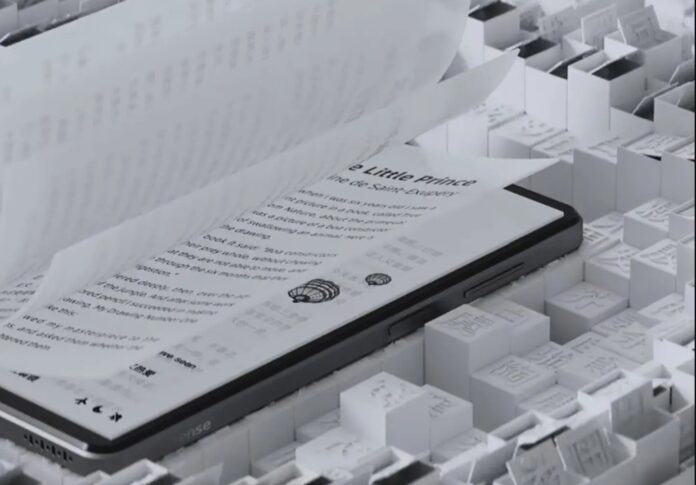HiSense is about to present his new e-Ink smartphone, sequel to the A7 released towards the end of 2020. Unfortunately it never came to us and there is no reason to speculate that things will change significantly with the second generation, however we already have some official anticipation of the Chinese manufacturer, released during World Book Day, April 23. In the meantime, the name will be a more evocative Hi Reader, instead of a simple acronym that has a bit of … “highway” tones here; and then it will be even lighter and more compact than its predecessor.
Judging by the specifications released so far, the e-ink panel looks identical to that of the A7: diagonal of 6.7 “, density of 300 pixels per inch, black and white. As we know the absence of backlight is ideal for long reading sessions, and is one of the main reasons why readers of Ebooks in a world full of tablets; however, this technology in the world of smartphones has had much more limited success, due to the very slow refresh compared to normal LCD and OLED panels. Those who were in the good days will remember the YotaPhone, which they implemented an e-ink panel on the back and a traditional display on the front.The idea never really caught on, and the company went upside down.
In any case, the other advances of HiSense tell us in particular of a SoC different from the UNISOC T7510 seen on the A7: a Huben T610 manufactured by Ziguang Zhanrui, which includes an octa-core CPU with a maximum operating frequency of 1.8 GHz. The technical specifications of the chip, however, seem even a slight step backwards compared to the T7510, as there are only two Cortex-A75 and six Cortex-A55, while in the other chip the same cores were split into a more balanced 4 + 4. The GPU is instead an Arm Mali-G52. However, it is an important chip for China because it is already part of the project of absolute independence from foreign powers, and is developed entirely with Chinese technologies. The production process is 12 nm. Honor has already used it in some smartphone models, including the Play 20. In any case, let’s recap the details that have emerged so far on HiSense Hi Reader:
- display: 6.7 “black and white e-ink, 300ppi
- SoC: Huben T610, 12 nm manufacturing process, 2x A75 @ 1.8 GHz + 6x A55 @ 1.8G Hz CPU, Mali-G52 GPU
- memory:
- 4 GB of RAM
- 64 GB internal
- OS: Android 10 with custom UI
- dimensions and weight:
- 7.5 mm thick
- 84% screen-to-body ratio
- 177 grams
HiSense Hi Reader will be presented on May 11 in China, during an event that the company had already confirmed some time ago.














